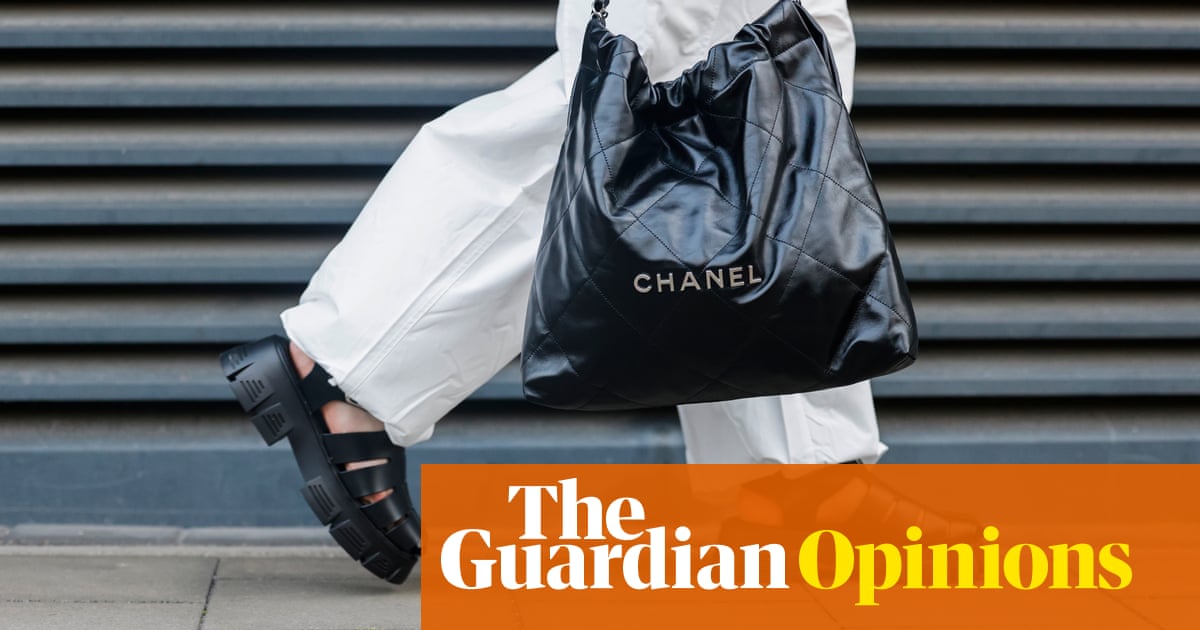
Asos has warned it is facing a sales slump of 15% in the year ahead, the latest in a long line of bad news from the online retailer. The picture wasn’t always this gloomy. In early 2021, sales were booming, and the company more than tripled its profits as people flocked to online shopping for comfy stay-at-home staples like hoodies, joggers, and leggings. That same year, it acquired the iconic Arcadia brands – Topshop, Topman, Miss Selfridge and HIIT – and seemed to be going from strength to strength.
So where did things go so wrong? Everything from stocking unprofitable labels to an unseasonably cold spring has been blamed for Asos’s rapid decline. Indeed, Mat Dunn, its hief operating officer, said last year that it was a “broad-based phenomenon” with no one reason. But there’s a glaring issue that seems to have been overlooked: Asos is in the grip of an identity crisis.
When Asos bought Topshop in 2021, it appeared to be a confident declaration that it had the design and marketing chops to revive the brand that was once a mainstay in wardrobes across the country: one flourishing British retailer rescuing another. But Topshop has failed to reach the pinnacle it once did (it was once so highly regarded it was on the London fashion week schedule), and despite some good denim sales initially, growth slowed in the UK and tanked in North America. By the end of 2021, Nick Beighton, Asos’s chief executive, had left after projections of cascading profits, and now the retailer is reportedly in talks to sell Topshop.
Today, it is difficult to say exactly what Asos is and who it appeals to. In the early to mid-2010s, Asos was a cool, pioneering presence on the London fashion scene. Asos magazine was one of the UK’s most widely read fashion circulars and it counted Adwoa Aboah, Lili Reinhart, Zoe Kravitz and Daisy Lowe among its cover stars. Its models had an edge to them and its fashion had a fun, slightly indie vibe that its competitors didn’t. But scroll through its e-commerce site now, and it’s hard to differentiate its aesthetic from Boohoo, Missguided or Pretty Little Thing, all harsh lighting and Instagram Face. Arguably, Zara now takes the crown for interesting e-commerce photography, oscillating somewhere between the editorial and the bizarre.
So if Asos can’t keep its customers coming back on the strength of its fashion direction and brand appeal, how about its price point? When I quit fast fashion, going cold turkey after feeling as if I was complicit in the mistreatment of garment workers, the Asos app was the first one to go – it had to if I was to avoid falling back into old habits. I’d spend hours scrolling and adding things to my wishlist, the cool styling and editorial content a never-ending source of inspiration and temptation. And, crucially, it was affordable. But in today’s fast-fashion landscape, Asos just isn’t that cheap any more.
Rising costs of warehousing, labour and raw materials have meant the retailer has had to raise prices at a time when consumers have been tightening their belts, and despite sky-rocketing returns levels forcing competitors including Boohoo, Next, Uniqlo and Zara to start charging their customers for returns, Asos has kept free returns for its premium customers.
Suddenly, brands like Shein are selling clothes for just a fraction of the price of Asos. With newcomer Temu on the scene, too, even the likes of Boohoo (which used to be the uber-cheap thorn in Asos’s side) are struggling to compete with their rock-bottom prices.
Although Shein and Temu are thriving, as many shoppers continue to prioritise price and convenience over sustainability, there has undoubtedly been a pushback against exploitative fast-fashion practices, with many customers now using secondhand retailers (a market expected to nearly double by 2027) and some pledging to boycott brands who don’t prioritise sustainability.
Sensing this shift, Asos previously tried to position itself as a sustainable force within fast fashion, partnering with the Centre for Sustainable Fashion to publish the Circular Design Guidebook in 2021 and releasing a ‘“circular design collection” in 2022. But since then, no other circular collections have been brought to market and after its latest dreary forecast, the brand is promising to “get “back to fashion” and “substantially improving [its] speed to market” – don’t sound like the words of a brand that is prioritising sustainability.
It is clear that Asos is struggling to keep pace with the new crop of ultrafast fashion brands, but it also lacks the adequate credentials to be a ethical or sustainable alternative that consumers would deem worthy of investing in, and it doesn’t have the design or quality edge that draws consumers to the likes of Zara or & Other Stories. It is time for Asos to simply pick a lane. No matter how much it offloads stock or speeds up its supply chains, unless Asos forges a new identity – or reclaims its old one – it will continue to lose customers at pace.
-
Sophie Benson is a freelance writer working with a focus on sustainability and feminism
Asos has gone from being an iconic comfort brand to a fast-fashion also-ran. What happened? - The Guardian
Read More
No comments:
Post a Comment